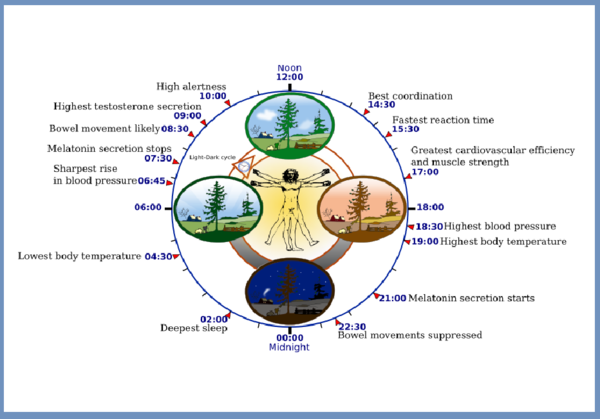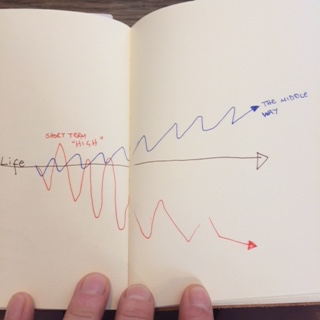“Sarcopenia” is the term given to muscle wastage that occurs as part of the ageing process and can be one of the reasons people are unaware that their body composition is beginning to change. Potentially you could stay the same weight and have measurably similar limb or trunk circumferences, but actually have lost muscle mass and gained fat. This process can be offset by the right kinds of exercise, but it’s a concern because loss of muscle mass is directly related to loss of functional strength as well as balance. In fact the three main risk factors for falls in the elderly are low muscle mass, balance, and the number of prescription drugs that person is taking.
Read moreSpeed and power training for cyclists
As the racing season comes to an end for most of my competitive cyclists, I thought I’d share a few thoughts on some speed and power based exercises I’ve been using with them this summer. In strength and conditioning terms these are the icing on a cake that has been baking for some time. Or to use a more traditional analogy - the peak of a pyramid whose base has been built on solid strength and conditioning work for (often) 18 months to 2 years.
Read moreTo gym...or not to gym..?
Working without the overheads of gym rent and travel during lockdown allowed me to sustain a good income in spite of the changes we’ve all been going through, and exercise habits have been central to many peoples coping strategies. But as gyms reopen and everyone is reviewing their options, I’ve been reflecting on the pros and cons of being in the gym environment…
Read moreWhy when we eat matters
Everyone seems to be on their soap box with their latest soundbite to fix everyone’s dietary problem. So, with this backdrop in mind, I’ve decided to focus my thoughts on the least controversial and perhaps most powerful aspect of your daily diet. Something that you might not have even thought about. Because I am a coward and I don’t have time here to cover everything.
Read moreMarginal gains for the masses
“All the gear and no idea” is that derogatory phrase all too oft quoted to reference the middle-aged athlete launching headlong into a sport with all the expensive equipment and no clue about the fundamentals. Working with MAMIL cyclists as I often do, I’ve met quite a few of these types. On the one hand, I embrace the enthusiasm of a new and exciting fitness project, but on the other I’ve sometimes had to persuade a few prospects to downsize their ambitions in the short term, so that they don’t do themselves an injury in the long run. For example - the aspiring triathlete who approached me in the autumn to race an ironman the following year with next to no experience, let alone any endurance base.
Read moreWhat's the point of a personal trainer?
This is Emma. We’ve been working together regularly for 4 years now, and I’m so proud of her progress. When we started she was a reluctant exerciser. Now she trains by herself in her local gym once a week, swims once a week, and works with me every Monday. She’s looked at her diet and lifestyle as well as her exercise, losing more than 10Kg in weight, and getting stronger and stronger.
Below she discusses what it’s like to be trained by me, a discussion stimulated by comments on a facebook forum….
This is Emma. We’ve been working together regularly for 4 years now, and I’m so proud of her progress. When we started she was a reluctant exerciser. Now she trains by herself in her local gym once a week, swims once a week, and works with me every Monday. She’s looked at her diet and lifestyle as well as her exercise, losing more than 10Kg in weight, and getting stronger and stronger.
Read moreDoes women's cycling want a Tour de France?
After several years of only managing a passing interest, this year I’ve been avidly following the Tour de France coverage on ITV, and I must admit I’ve loved it. It’s been a pretty special race, and for me the familiar riff of the accordion in those opening credits and the unfolding excitement of the three-week drama has brought back a nostalgia for this sporting soap opera that first captured my attention as a kid.
Read moreStuffocation
Moving house is undoubtedly stressful, and one of the reasons is that from a biological/evolutionary point of view it represents a ‘1stalarm reflex’. It can trigger our primitive safety and security alarms, setting in place a cascade of hormonal responses that tell our bodies that we are under threat, or potentially may not be safe.
Read moreBe more tortoise
If you were optimistic at the beginning of the year, but are now losing ground and wondering where to turn, do not despair. As a counterpoint to all the New Year health and fitness hype you’ll have been wading through this last month, I’m going to offer you some wisdom by way of the tortoise, or in fact by way of two tortoises called Bob and Penny.
Read moreBack to Movement School
September still has that ‘back to school’ vibe for me, even though I’m no longer a child and am not a parent – I feel like I want to buy…
Read moreBeyond Bike fitting
Every once in a while a client falls into my lap who I know is going to become a teacher. If I’m honest my first reaction is a sense of…
Read more"Health and Fitness" - What's in a word?
Those two words are couched together so that they are often presumed to be synonymous, but I don’t believe that’s always the case. On the simplest level, if you’ve got…
Read moreOn pain and patience - a cyclists story
Time flies when you’re having fun, but for a cyclist with back pain it can stretch out for what seems like forever. It’s now a year since Phil came to me for a bike fit to try to resolve his back and leg pain, and seven months since we started consistently working on corrective conditioning to get to the bottom of the problem. I know this sounds like a long time, but with chronic musculo-skeletal problems, it can be a long road to recovery, which is why I’m inviting you to follow Phil’s story in real time here. If you haven’t read the first installment, have a quick catch up: http://jomcrae.co.uk/just-an-ordinary-bloke-who-wants-to-ride-his-bike/
Read moreWhat is the cyclists mythical 'flat back', and why should we all aim for it..
The ‘flat back’ position sought after by cyclists has excited the interest of many commentators, fans and onlookers, and by most accounts has been the mark of a good rider. The beginner will give themselves away by their higher handlebar position and more upright upper body, while proper riders ‘slam’ their stem with a more notable ‘drop’ from saddle to bars, achieving a more aggressive, ‘racier’ position and a ‘flatter’ back. The flat back is to bike posture what souplesse is to the pedalling action; It is a sign of class. And while we all understand what the ‘flat back’ refers to in normal cycling parlance, the bio-mechanical factors that underpin it are not so easy to grasp. Aerodynamics plays a big part in the racing cyclists’ preference for a lower front end, but enhanced power output resulting from a lower cock pit and a more forward-tilted pelvis are important elements too.
In contrast to this racy style of position, there is an emerging group of riders who are now sold on the benefits of a more upright bike fit; riders with sensitive lower backs who actively seeking out ‘endurance’ frames with longer head tubes to protect them from injury, and to allow them the comfort to ride for longer and without pain. For the most part these two positions seem polarised, suggesting that a flatter back and a more aggressive position favours speed, power and improved aerodynamics, while an upright riding style is one of comfort and safety.
But is it really true that a straighter, more upright back is a safer position for cyclists with lower back problems? And aside from improved aerodynamics what is it about a flat back that makes it so effective and desirable?
One first important point to raise before discussing this further is that the flat back posture is a misnomer, so in this blog I’m going to discuss in terms of functional biomechanics the cyclists back shape and the factors influencing it. The desirable ‘flat back’ that we talk about amongst ourselves is actually a flexed back, bending forwards from a riders pelvis seated in the saddle to the handlebars. And it is the smoothness and height of this forward bending curve that facilitates the trade mark ‘flat back’ as we might describe it - a low curve that is more towards the horizontal than the vertical - a curve that allows the rider to drive hard with the legs but stay still and low at the front.
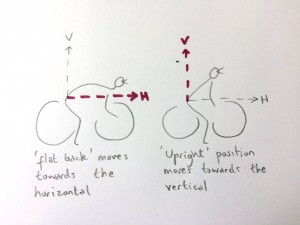
From my point of view, range of motion assessments for the spine and key muscles attaching to the pelvis form part of my arsenal in understanding a rider’s position and looking to improve it. There are the obvious things on the bike that can be changed, notably the contact points at the pedals, the saddle and the handlebars. But the factors that impact most on the scope and range of these adjustments are the bodily limiters that are going on in between. Of course things like height and limb length cannot be changed, but for many riders flexibility and mobility can, by consistent targeted stretching of stiff and tight areas, and by acclimatising to the cycling position by way of progressive time spent in the saddle.
Having been involved in a bike fitting service with Mal Pires at le beau velo from from 2012 -2016, and now offering a bio-mechanically minded bike fit of my own, I’ve have been lucky enough to measure, assess and analyse the issues across hundreds of bodies, with fittings for both bespoke and ‘off the peg’ examples too. On many occasions a rider coming in for a bike fit has already had several opinions and is looking for the holy grail, the solution that will make them faster, more comfortable, and sometimes pain free. Often you can guess where a client has had their previous fit by the set up of their machine, as each ‘school’ seems to come with its own philosophy. Some are known for their unusual frame geometry outside the standard off the peg possibilities, catering for the customer needing rehab/pre-hab, or ‘comfort’ when working around a known problem area. Often riders with back or neck problems have favoured a high and short front end and a longer than usual head tube, or lots of spacers. Others clearly favour power and performance, and go for the highest possible saddle set up, often with a slightly forwards position and a lower front end.
In bio-mechanical terms, it has become increasingly apparent to me that the body elements (flexibility in particular) impact significantly on the possible back shape any rider can achieve between the contact points of the seat and handlebars. Whilst many bike fits quantifiably measure limb angles and the relationship and alignment between body measures (such as the angle of the line from hip to shoulder), often it is simply the discerning eye of an experienced bike fitter who must observe the shape of the back in between, and makes a judgement on the position accordingly. Visually, the shape of the back of a rider in a well-balanced position should have close to the pleasing ‘flat back’, with a smooth flexed curve and no obvious crunch points or hinges. In spite of all the technology and algorithms offered by many modern fits, understanding what makes a good back shape and helping a rider achieve it can be key to finalising a working position.
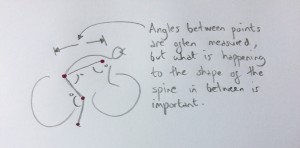
Some riders have the capacity to explore all the options, and push the envelope at the performance end to see what they can tolerate. Others are very restricted in what they can achieve, resisting even small changes because it upsets the balance of their body and how it feels on the bike. Most obvious to any keen-eyed observer is that some people just look good on a bike, while others do not, and for the most part this is connected to the rider’s ability to mould their body to any bike and still make it work for them efficiently. In his book ‘Bikefit’, Phil Burt refers to these riders as ‘Macro absorbers’, whilst those riders who feel every minor change in their set up he calls ‘micro-adjusters’. The experiences he retells in his book reflect that even in the professional peloton both kinds of rider exist.
In my view, robust riders who are in good physical shape, with flexibility in their spine and hips, and a level of efficiency developed through hours in the saddle can drop into an effective and attractive position relatively easily. More sensitive riders with perhaps chronic tight areas, an injury history or an ongoing issue may have their own personal biomechanical limiters which amplify the need for fine tuning the contact points (saddle, pedals and bars). In the general population it is often the sensitive micro-adjusters who are looking for answers and solutions from multiple bike fits. From my point of view as an exercise professional, changing the bike will only get you so far with a micro-adjuster. Changing the body, though it may take more time and effort, will extend the potential positions that can be made possible further.
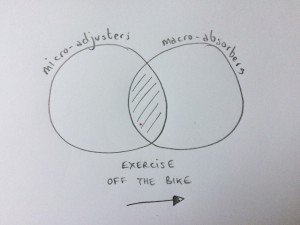
Key factors for me to take into account are range of motion of the spine, and the length-tension relationships of the muscles around the pelvis (the hamstrings, gluteals and hip flexors in particular). Measuring these elements off the bike first, and then finding a way to assess their impact on the bike second, has been key to developing my understanding of finding and developing a comfortable and powerful bio-mechanical position for any rider.
In particular, a measure of pelvic tilt (as measured from anterior superior iliac spine to posterior superior iliac spine), and its relationship with knee extension (reach to the pedal) has become an important element of my bike fit. I have written previous blogs about these individual elements as I began to understand them back in 2012. You can retrace them here:
http://jomcrae.co.uk/bike-fit-part-1/
http://jomcrae.co.uk/bike-fit-blog-part-deux/
The pelvis is of course the power centre for any cyclist, which is why saddle height is usually adjusted first. But the delicate balance between the driving muscles at the pelvis and the muscles pulling on the cockpit at the front needs to be negotiated to provide optimal handling and control of the bike as well as power production. The shape of the cyclists back is not only determined by the tension and pull of any muscles acting at either end of any given position, but also the resistance in the spine itself to stretch and move into an elongated shape. Segmental mobility of the spine is particularly important, meaning that each vertebra must be mobile enough to move and respond to the stretch being placed on it in the cycling position. Where the bones of the spine are stiff or ‘fixed’ through any area, it will resist the flat back position and show as an excessively hunched area unable to respond and change even as a position is adjusted around it. This should not be confused with a poor position which can create this shape because the spine is not being stretched adequately by the set up.
While there are aerodynamic advantages to being lower at the front (reducing frontal area), and biomechanical advantages too (greater anterior pelvic tilt – the rolling forward on the saddle that allows for the powerful gluteal muscles to get more involved), there is an important tension that must be created throughout the whole body that is perhaps sometimes overlooked, and avoided by riders with lower back problems in particular.
Adequate drop and reach tensions the connective tissues that connect the moving muscles of the legs and hips, with the skeletal structure of the spine, and the stabilising muscles of the upper body. Often, we think of tension as a negative thing, but if you imagine this tension as tethering, you have a better idea of how the curve of the spine in a good position works in practice, being stretched and tethered at both ends through the connective tissue that links them – the thoracolumbar fascia. Wikipedia won’t help you much in understanding the anatomy of this complex layered tissue (I’ve checked), so I’ll do my best here to help explain its importance here.
First let me recap my definition of fascia from my book “Ride Strong – Essential Conditioning for cyclists”:
"‘Fascia’ is the term given to a band of connective tissue that attaches, stabilises, encloses and connects muscles or organs of the body. Collectively these fascial layers form a complex layered web of tissue throughout the whole body. Maintaining the pliability of these tissues is as important as maintaining muscle length.”
As the name suggests the thoracolumbar fascia links the thorax (chest or upper body) with the lumbar region (the lower back and pelvis), and with three layers as well as fibres criss-crossing right to left (and vice versa), the layers act as an important and dynamic bridge between the upper and lower body. The thoracolumbar fascia is intimately linked with ‘core’ muscles you may have heard of as a cyclist, such as the hip flexors, the quadratus lumborum, and the erector spinae, and is indirectly linked to the muscles of the hips and legs via attachments at the pelvis. Moreover, layers and fibres of this tissue connect directly to the vertebrae of the spine, impacting on the tension created at each segment throughout.
The thoracolumbar fascia comes into its own in any forwards bending movement, when (with a functioning core) it works to decompress the lumbar spine and separate each vertebrae. This is particularly important in off-loading the lumbar discs when the spine is flexed under with light to moderate loads (I talk more about the importance of learning to lift heavier loads with a ‘neutral spine’ in my book, but that’s not what we’re talking about here).
Now consider this anatomy in light of the cyclists position bent forward seated on their bike, leg and hip muscles stretching and working as they reach with every pedal stroke, and arms reaching to steady the upper body at the handlebars. Ideally a balanced stretch coming from both ends of the position has a tethering effect at the lower back via the thoracolumbar fascia, making it feel more comfortable and allowing all the relevant muscles to work optimally. As a rider works harder, pushing more with the legs and pulling on the handlebars more tightly, the core becomes more active and this clever mechanism dissipates this force at the lower back by separating each lumbar segment, taking the strain off important structures like the lumbar discs and connecting the upper and lower body to transmit maximum power to the ground through the bike.
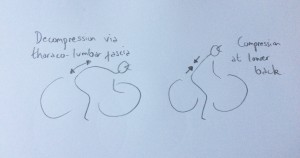 In a bike position where a rider sits with a more upright spine, with less weight held through the handlebars and more load centred around the lower back, this mechanism is somewhat impaired. As compared to the well-balanced bike position described above, a more upright back is less ‘active’ in the core, and represents a passive sitting position that can often lead to the sensation of ‘crunching’ or compression through the lower back.
In a bike position where a rider sits with a more upright spine, with less weight held through the handlebars and more load centred around the lower back, this mechanism is somewhat impaired. As compared to the well-balanced bike position described above, a more upright back is less ‘active’ in the core, and represents a passive sitting position that can often lead to the sensation of ‘crunching’ or compression through the lower back.
Consider an ordinary cyclist with a typically stiff lower back, with poor posture and lumbar discs that are migrating steadily backwards. A position with a slight forward bend without a lot of weight or work through the arms is likely to be much more provocative than one where a balanced tension is created from the front to the back allowing the thoracolumbar fascia to do its job. The tensioning needs to be balanced between all three contact points to achieve the desired result, but having adequate drop and reach at the bars relative to a sensible saddle height is key to bio-mechanical and literal balance.
Naturally the extent of the drop and reach will depend on the riders height and limb proportions as well as their flexibility, any issues and goal events. However, I’ve come across many riders who have very little drop at all, or even a negative drop (the handlebars are higher than the saddle) which in my view negates some of the fundamental points of a drop handlebar road bike.* The interplay between drop and stem length or top tube length can make an important difference too, and some riders who can’t manage very much drop, may do well by lengthening further instead.
[The only exception I’ve come across where a handlebar higher than saddle position is more appropriate long-term is where arthritic changes in the neck become prohibitive, in which instance a more hybrid type set up could be recommended].
I have found that even for cyclists diagnosed with a disc bulge a properly balanced cycling position (with a moderate amount of drop and reach) is often less provocative that sitting for long periods in a chair. A well-adjusted cycling position is at least a dynamic flexed position, stretching the lumbar spine via the thoracolumbar fascia and opening up the posterior space where the discs might need room. Sitting in a chair for hours on end is much more problematic, compressing the lumbar discs and aggravating symptoms.
Naturally the amount and intensity of any riding for anyone with back pain needs to be carefully considered together with taking steps to change the underlying elements that caused the problem in the first place. But shooting for an upright position and a higher, shorter front end is not the solution. Most important for any rider with a sensitive back is their appreciation of the issues involved and a need for a patient process led approach to a bike fit, as well as a commitment to change the body through appropriate exercise.
Equally important for beginner to intermediate cyclists is an understanding that a full ‘racing’ position from the get-go might provoke problems and prevent the steady progression that makes for consistent training. There is no hard and fast right or wrong to a bike fit, but I believe the trend towards higher, shorter front ends (both for beginners and those with back problems) is often a mistake. Having said that, I also believe that a progressive move towards your optimal set up will be enhanced by off the bike exercise to increase the range of movement in restrictive areas. The body is dynamic, and so your bike fit should be too.
Letter to my younger self
I know you’re anxious, and a bit excited too, at the start of your career in fitness. The academic stuff has reached the end of the road, and you’ve turned your back on cycling, at least for now. So this is it.
You’ve got to make your own way in the world of work.
I also know that you feel like a failure and you’re going through your first heartbreak and everything, but It’s going to be O.K. It really is. So here are a few things I’d like to tell you about yourself and the industry, before you jump right in.
Firstly, and most important of all, you should know that who you are is going to be more important than any of your qualifications or achievements up until now. So when you go for that first gym job interview, just be friendly and open, because you’re not being judged in the way you might expect. And when they ask you “If you were an animal what would you be?”, FFS don’t be a rabbit in the headlights, just say SOMETHING, because your prospective employer is only trying to tease out your personality.
You see at the moment, you’re a bit one dimensional. You can’t help it, you’re 23. You think you know everything. But all those A levels and that degree from Loughborough only show that you’re clever in one way. They don’t really tell anyone what you’re like to work with or be around. The fitness industry is personality driven, it’s not like a bike race. You won’t get a placing or ranking, you will just have to figure out where you fit, and that will have more to do with who you are than with how many exams you’ve passed, or how well you can ride a bike.
Something else that you’re going to find difficult to start with is that some of your colleagues who are a lot less academic than you will have a lot to teach you, so don’t be an arrogant twat just because you went to university. Experience is going to be your best friend, so grab every opportunity that comes your way, and try not be be defensive when you feel insecure or challenged. Just be honest about what you don’t know or haven’t seen before, because people will like you all the more for that. Dare to give your opinion, but be ready to shape it and change it as you learn and grow.
You’re going to find the ‘performance’ side of your work difficult to adjust to at first, especially when teaching large groups, or when you’re on a big stage, but try not to be too hard on yourself, especially with the way you look. You’ll probably never have a visible six pack, or a body that’s at its best in a bikini, but that won’t matter by the time you’re in your 30’s, and most of your clients are in their 40’s and 50’s and wanting to feel and function better more than polish their Instagram profile. (You won’t have Instagram yet, or even a mobile phone, but trust me, its going to be big in the business). You’re not going to be as strong or as athletic as a lot of your colleagues, but try not to feel inferior because of that either. There will be lots of people who need a slow and steady approach like you, and you will be better able to help them because of your own experiences.
Those ideas you’ve got about the importance of free weights over cardio machines, and of having more squat racks and more space, you’re on the right track with all of that. But its going to take about 10 years for most people to catch up, so try not to ram it down their throats quite so much. And when people think you’re a bit mad for making these suggestions, don’t get frustrated, just confidently explain your ideas and let people come around to them in their own time.
You should know that the financial side of this kind of work is going to be a bit of a roller coaster. I know you haven’t even thought about this for a second, because you’re just doing what you love, but maybe that studio you want to open should wait a few more years until you know more what you’re doing, and have figured out how long it takes to pay off debts with modest earnings. And maybe try not to swallow that American shit about the laws of attraction quite so whole-heartedly. Admittedly much of what you learn to be useful will come from Americans, but temper it with a bit of British reserve and it will work for you a lot better. You will have to go it alone to make a living in the fitness industry, but you can do it, so have faith in yourself, tempered with a tiny pinch of caution.
Many of your contemporaries in their 20’s, will no longer be involved in fitness in their 30’s, but you’ll find its true enough that if you share your passion and knowledge and keep learning, people will find you and want to work with you. Even more surprising, you will find that being older actually becomes an asset, bringing with it a wisdom and temperance that you can’t imagine now with your crazy spiky hair and your bright red track suit and matching trainers. Learn to measure your success by the relationships you build with your clients, and with the progress they make with their health and fitness, not by your bank balance or your monthly income. That’s never been what you’re about, so don’t be surprised if your assets come in the form of self-efficacy and job satisfaction, rather than a house and the nice car.
What you don’t know about yourself yet is that you are creative and adaptable, and you’re going to need these traits in spades to navigate the trends and fashions as they come and go, and still hold true to your values of what works and what you believe in. Yes, you’re smart and you know what you’re doing, but your empathy and your kindness are really very important, so don’t be shy to let people see your sensitive nature.
So with that in mind, go on and get that gym instructor job. And then get on every course you can, and learn to teach and coach, and show off a bit. It suits you.
Just an ordinary bloke who wants to ride his bike
Phil is just an ordinary bloke. An ordinary bloke who likes to ride a bike. Phil and I know each other from Wednesday rides out with Bigfoot CC, but he first came to me in my professional capacity in May for a bike fit with former colleague Mal at Le Beau Velo. I was very aware when we fitted Phil that a bike fit might not be enough to resolve the back pain which was then starting to interfere with his riding. This has often been the case with bike fits, and its one of the reasons I now focus on the biomechanics of the body in a bike fit more than anything else. However, a look at the body on the bike first can certainly help to keep a keen cyclist riding as much as possible, and allows me to ensure that the riding position itself is not contributing to the problem.
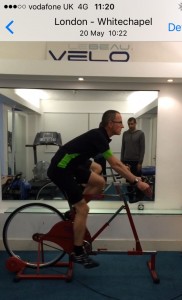
Needless to say Mal and I were able to improve Phil’s position quite a bit which helped offload his lower back and make riding more comfortable. As well as changing Phils position at that time I provided a tailored stretching program, to make a start on some of the issues that came up with my assessment as possibly contributing to Phils pain.
People sometimes mistake me for a physiotherapist because I work with clients with injuries/pain issues using exercise. However, I’m not a therapist but a ‘corrective exercise specialist’, which means that instead I use ‘corrective’ exercise to change what I see with my physical assessment through personally tailored progressive exercises. Often clients who work with me in this way have got as far as they can with physiotherapy and treatment, and are trying to move forwards for the longer term, away from the acute problem towards or a more permanent long term resolution.
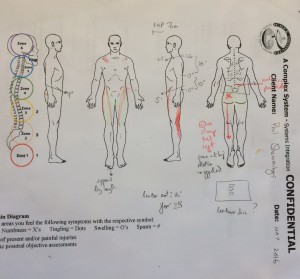
Many of my assessments overlap with those that physios use, including range of movement, core function, and in Phils case, an assessment of the neurological components to his back pain and sciatica. The overview above is a summary of my findings from May, and by the time I caught up with Phil in the Autumn he had reached a plateaux with physiotherapy and an MRI had been sought to help identify the specifics of Phils ongoing back problem and ‘referred’ pain and weakness down his left leg.
In the interim period since our first session, Phil had been having on going treatment and had only intermittently been following the exercise plan that I had given him. Like most people he was hopeful that someone would find THE ANSWER and be able to FIX THE PROBLEM for him. By the Autumn it was becoming apparent that treatment options were narrowing, which motivated Phil to have another go at my corrective approach in a more committed way.
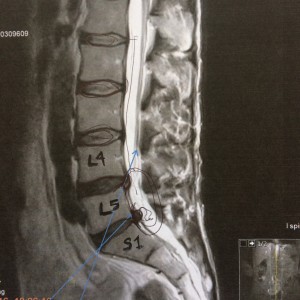
For me as an exercise specialist, in difficult cases like this one, an MRI can be a really helpful diagnostic tool in confirming exactly what is going on in and around the spine. The images that came back from Phils MRI and the report that came with them identified a ‘left lateral prolapse at L5/S1 compressing the descending S1 nerve roots in the lateral recess'. I’m trained and qualified to assist in rehabilitating this kind of disc derangement, and at the heart of the holistic approach is to not only use exercises, but closely observe and adjust the way the client moves in their day to day life, educating them to avoid aggravating the problem, whilst getting to work on provided greater support with exercise.
This approach is by no means a quick fix, but with the next likely suggestion being back surgery I’ve caught Phil in a motivated mood and am keen to see what we can do before it comes to the knife. This is where you pick up the story with Phil. If you have the early signs of back pain and are not looking after your body, maybe Phils story will encourage you to get a bit more proactive sooner. Keep an eye on my twitter and Instagram feeds if you’re keen to follow Phils story with the hash tag #followphil. It will be like #followfabian but with an ordinary bloke.
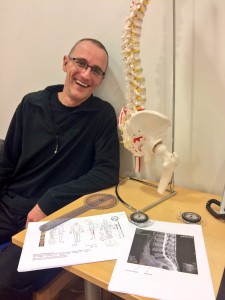
Operation Impact
For quite a while now I’ve been deliberately battering my naturally fairly feeble body. Over the last couple of years I have upped the anti with greater loads and higher impact exercise to test the boundaries of what my body can do, and see what I can learn in the process. This is a conscious choice you understand, and one that I’ve taken partly by accident in the first place, and then by further design. As a keen cyclist for many years (and a swimmer before that), the bulk of my exercise regime over the years can be bracketed in the ‘low-impact’ group favoured by the elderly or those with joint impairments. Whilst I fully intend to be one of the old ladies swimming morning lengths of the pool, and hope to swing my leg over my bike long into the future, I’m not quite ready to limit myself physically just yet. As an endurance cyclist first and a fitness professional second, I will always be playing catch up with my more athletic fitness colleagues who leap and bound up and down the gym, or pop a human flag from the nearest lamp post. But I do want to steadily expand my physical potential for as long as that is possible.
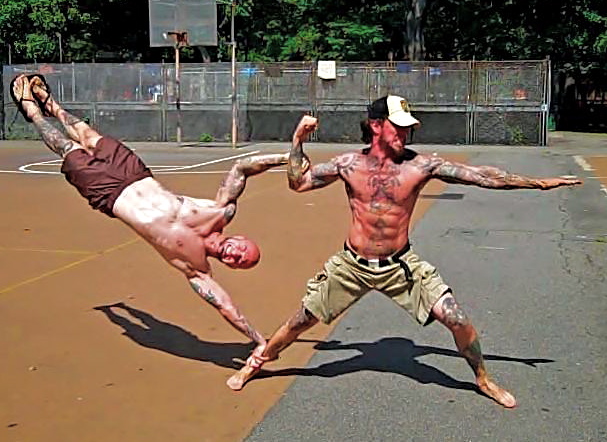
So, in the last couple of years I have been dabbling in some weightlifting, and trying tentatively to include a bit of running. To do both without problems ideally you need to have good posture, good stability, and for the Olympic lifting, good form in some of the grounding strength movements that form the foundations. But even with all of these elements in place if you are not used to the different loading you have to keep a careful eye on volume and intensity to avoid injuries or issues, or just debilitating soreness.
Some of you will have seen my weightlifting antics on twitter or Instagram and either been confused/impressed/unimpressed depending on where you are coming from. To clear up any question marks, I won’t ever be a ‘weightlifter’, nor is this my main sport or pursuit. I am a cyclist first and always will be. This is simply a personal endeavour that I am involved in for the fun of learning, for the effects that it has on my body and mind, and for what it might bring to my work as a coach/conditioning specialist.
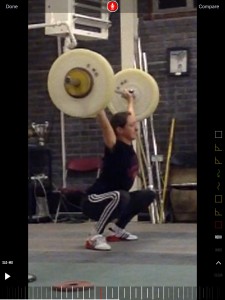
As is always the case for me, I learn the most through experience and in the first eager six months in the weightlifting gym I was often there for an hour and a half at a time, enjoying the drills and practices and racking up sets and reps with pleasure. Not surprisingly it was the after effects of this momentary fun that started to become a hindrance to other activities and sometimes made me stiff and sore for days. Unlike most of the men and women in the gym, this type of exercise at the strength and power end of the spectrum could not be further from my biological norm, and as a result I had to learn to approach the discipline in a more measured way to make the most of the benefits without suffering from any of the pitfalls. I studiously started adding up the total reps in any workout and limiting the number I allowed in any one session.
My detour into running has been equally painstaking. Once or twice over the years when I’ve tried a bit of running before I’ve always found my joints really struggle to deal with the impact. Sometimes it has been my ankles and for a while an old crash injury to my knee was a limiter. A careful selection of footwear and then an introduction of short bursts of running drills began a patient journey of progression towards a full 20 minutes of running. And so after easily six months of preparation it was with great amusement that my flat mate watched as I staggered, no limped, up the stairs after my first parkrun. No joint injuries or problems as such, just the sheer shock to my body of all those impacts with the ground. It felt like I had run a marathon. Hundreds of NORMAL people do park run EVERY week, and yet for me this had been a fairly momentous achievement, and one that I am trying to consolidate before considering my next move.
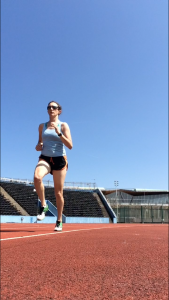
This sort of challenge is of course what I am looking for all the time. I want to feel stronger, and maintain my bone and muscular health as I move towards middle age. I want to be able to run for a bus or a train easily and I want to make sure my body is as capable as it can be, so that my overall health and well-being as well as my cycling fitness is maintained long into the future.
In my recently published book ‘Ride Strong; Essential Conditioning For Cyclists’, I explain one of the key principles that I apply to my training and my work – The Success Formula.
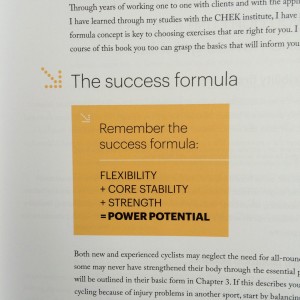
The success formula dictates that the more deconditioned you are, the more you will need to focus towards the left of the equation, and then progressively move the emphasis towards the right. I do this with my clients, and I do it for myself too. Not only does this equation help you to know where to start with your conditioning, but it also allows you to know when to make a change in your conditioning plan to remind or recondition the body in some of the earlier phases.
In my early days in the fitness industry as I trained my almost exclusively cycling body to become a more robust all rounder, I spent an awful lot of time on restoring my flexibility, alignment and basic movement ability. I was shocked to learn I had poor posture, and a weak and imbalanced core, and I had difficulty with some of the basic strengthening movements that everyone should strive to perform easily and well. Patience and consistency in applying these principles to my training has brought me a long way, but I am happy to acknowledge the need for a return to some flexibility and stability work over the coming months, as I consolidate the improvements I have made.
Where do you think you sit on the success formula spectrum?
How can you move yourself further to the right to enhance your movement and power potential?
Don't bite the hook...
Emotions have been running high recently, both in the world of cycling and in the world of Jo. Many people raised their voice on the issues around bullying in women’s and para cycling, and I am listening in with interest. I haven’t felt the need to add my own opinion to the mix yet, not because I don’t care, but because I think its complicated, and that doesn’t make a great sound bite or add anything very useful to the arguments. Not only am I interested in the issues, but I’m keen to see what I can learn from the debates since one of my personal goals for 2016 is…
To speak clearly and be heard.
Communicating what you want or feel effectively is not always that easy, and so far the universe has not disappointed in delivering opportunities for me to practice.
Some people shy away from confrontation or disagreement, preferring to appease or agree rather than face the difficulty of accepting another person’s view point different from their own. Others pretend not to care, so that the pain of rejection is lessened by not having exposed that vulnerability in the first place. For the most part, my approach has been to intuitively feel strongly about many things, rant a rave a bit without really getting to the nub of the point, and then run away to avoid the fall out and ensuing embarrassment that results. I believe I can do better, so I’m looking for tools that will help me become more persuasive and less reactive.
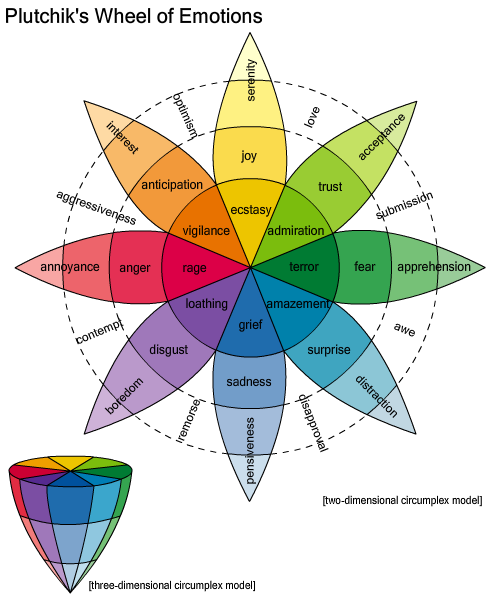
Blame
When someone pushes your buttons and discomfort starts to build towards anger, the easiest thing to do is blame someone else. Something happened to me recently that made me respond with rage that derailed me for days. If you are a passionate person, when this happens you find that those closest to you mostly just want you to calm down. In sensing the depth of your emotion they feel uncomfortable and want you to move past or through those feelings as soon as possible. However, if you care enough to get that angry or upset in the first place, I believe you have to find a way to do something with that emotion rather than just move it to one side. Avoiding or assuaging will only bury that anger as resentment. Expressing yourself clearly so that you can be heard may change the opinion of someone else, or at the very least it will ensure that yours has been a part of the decision making process.

Fortunately, at this juncture (in a post rage exhaustion slump) I was reminded of an audio book I have by the Buddhist teacher Pema Chodron called ‘Don’t bite the hook – Finding freedom from anger, resentment and other destructive emotions’. In it Chodron talks about the Buddhist concept of ‘Shenpa’ which she describes as the charge behind our opinions, the attachment that stops us from seeing the other point of view because we are angry or irritable or enraged. Shenpa is the ‘hook’ that leads us to escalate our own violence rather than patiently sit with the discomfort, holding our opinion with a lightness that keeps us open to the other point of view. She says:
“Patience is an austerity. Nothing takes more courage than to work with patience”
I must admit, patience is not my strong point. In Buddhist teachings anger is usually a response to fear, and in this situation I found myself in I was frightened that my opinion was not being listened to or properly heard. Somehow I had to move beyond the unhelpful ranting phase to a point where I could patiently look at the situation and find a way forwards. Shouting louder just wasn’t going to do the trick.
Chodron goes on to talk about fear as the vanguard of courage, saying that it gives you a choice to go in two directions:
“does it go in the direction of aggression? - striking out against yourself and others, or does it go in the direction of confidence? - gentleness, courage, and tender hearted bravery”
And so with this timely reminder, and dropping numerous F bombs along the way I patiently moved myself from a position of rage to a calmer place where I could express myself more rationally.
The Bully and the Coward
Feeling that you are being bullied is unpleasant to say the least, but for me feeling that I am a coward is even worse. If you’re challenged by a bully, or just confronted by someone who is pushing you around, the challenge is not to push and shove and bully back, but to simply stand up for yourself. As Carrie Ure mentions in her blog: (https://carrieure.org/2009/03/12/facing-fear-the-archetype-of-the-coward-part-i/)..
‘The Coward has his primary relationship with the Fear rather than the goal. He faces his fear and choosing to act or not, he learns about himself’
This idea really resonates with me, and on a few important occasions in my life I’ve felt the presence of the Coward archetype breathing down my neck and pushing me to confront the fear rather than run away from it. These moments have all come at significant choice points where I've had to stand my ground and fight for something that I felt was important. Reflecting on this most recent situation in the last couple of weeks, I have taken pride in the fact that I have done exactly that, and in doing so changed the course of action to move it in a more satisfactory direction for everyone.
In the Line of Duty
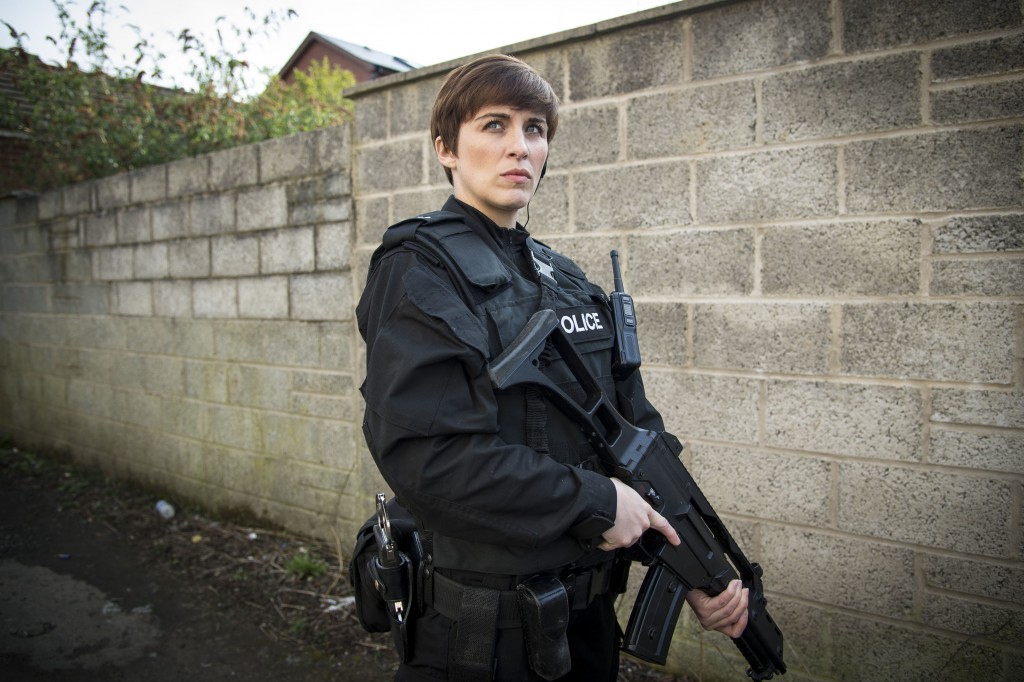
Someone asked me recently whether I was more afraid of a negative judgement made of me personally, than in my professional role as coach, and I had trouble answering the question. The difficulty I have is of separating the two as I feel like the one is an expression of the other (something I've mentioned before in this blog).
I know that there are many people who have a different set of rules in the workplace to those they would live by at home, and this is a luxury that professional sports men and women sometimes have to manage without. Calling the one world cold-hearted ‘business’ and the other more heart-felt and ‘personal’ seems to me to leave your integrity in a damaging state of schitzophrenia, but many people seem to manage it, and on a daily basis. ‘Professional sport’ occupies a grey area that for the professional ‘athlete’ often encompasses everything, so no wonder passions run high when there so much at stake.
So while I don’t understand all the issues involved in the recent British Cycling scandal, I do understand that it can be difficult for sports men and women to speak up without feeling crushed by the weight that a big organisation holds over their personal, heart felt aspirations, as well as their livelihood and personal economy.
Speaking for myself (and Jo McRae THE BRAND) I believe the challenge remains the same; to have the courage to say what you feel with confidence, so that you get to know yourself better, and do your best to move the future in the direction you would like it to go.
On discipline and deadlines..
I’m self employed, self determined and for the most part, self motivated. Freedom is something close to my heart. Having the freedom to say what I want and to be who I am is central to ME. Its one of my core values and its also central to my work.
Having the freedom to MOVE pain free and with the greatest POTENTIAL is what I give my clients. Healthy children are unhindered by pain and can express themselves freely through play. Healthy, fit adults can play too, with competitive or non-competitive sport. With a lack of conditioning, and because of the impact of modern lifestyles, some adults cannot enjoy their bodies the way they should, and that’s something that I feel passionately about changing.
Discipline is not one of my strong points. Which might seem obvious, since at first glance freedom and discipline seem antithetical.
But perhaps not.
A month or so ago a client of mine made this link for me after having spent time with some friends. Debbie and I have been working together for about six months now to resolve back pain issues which were getting in the way of her enjoying an active lifestyle.
Her friends had commented on how easily she was moving, when previously her back was affecting her on a daily basis. Naturally, Debbie was pleased that all her hard work had resulted in visible progress and reflected this back to me in the context of a quote she had come across in the workplace:
Freedom takes discipline.
Working in the field of therapy as she does Debbie and I laughed at this. Often we pay no heed to these sometimes clichéd ‘inspirational’ quotes, but it HAS taken enormous discipline for her to get where she is now, six months after having the discipline to make time for DAILY exercise. What’s more, for people with pain problems in particular, that first six months of exercise is often not that much fun at all.
Re-learning how to move properly, or how to engage muscles correctly can in the early stages be a painstaking process. Allowing time for new neuromuscular pathways to develop, or to identify provocative and alleviating factors can be boring to say the least. If you’re injury free and moving well, its something you take for granted. Its only when that freedom is taken away from you that you realise what you are missing, and you have to find the discipline to get it back.
For sports people, training can often be monotonous too. No one really likes to work on their weaknesses and training sessions can become boring when you have to repeat them for long enough for your body to adapt.
Not the sexy stuff.
This was something that I discussed with a personal training colleague over the Christmas period too. How it’s hard to keep some clients engaged through these early stages before they can get to the sexy stuff that they might want to do – Olympic lifting, or handstands, or ski-fit or whatever. In the health and fitness industry, there’s a lot of shiny fun out there in the New Year, and lots of people will have launched in FULL TILT with a New Years resolution hoping for that freedom to move and feel the way I think we all want to. Come mid February some will find that a slightly longer view with a little more discipline might be what’s needed to reap the rewards of a truly healthy, fit body.
Debbie was making fun of me too over this discipline business because at the time I was in the midst of slogging out a deadline for my forthcoming book to be published later this year. Those of you who have been following me for some time will know that this project has been in the pipeline for what seems like forever, and I’m excited to say, the manuscript is now in.
My book - Ride Strong; Essential Conditioning for Cyclists, will be published by Bloomsbury in October this year.
To say that meeting the manuscript deadline has taken some discipline would be an understatement. I love to write, but I love to move too, and my normal day to day self-employment never requires me to sit down at a computer for more than a couple of hours at a time. Over the Christmas/New Year period I worked solidly at my laptop sometimes ALL DAY. Sometimes I didn’t get dressed. Sometimes I considered cleaning the bathroom as a leisure break. Not since University have I had the discipline to work that hard on a project with the pressure of a deadline looming.
But I’ve remembered that anything worth going after will take some discipline in the processes that will get you there. If you want to change your body, you have to stick to a plan. If you want to change the way you think or behave, you have to keep working at at it.
With the discipline needed for any worthwhile endevour you earn a new level of freedom. A freedom to move better, to think clearer, to be calmer.
This time next year, my book will be on the shelf for any cyclist to use as a reference. I will have the freedom to say, ‘Have a look at my book which explains more about stretching, strengthening and core training’. And readers will have the freedom to design their own conditioning program, so that they can ride their bikes pain free and performing at their best.
So I’m adding self-disciplined to my list of ‘selfs’. I don’t know what I’m going to do with it next, but I know its there when I need it. And I know it opens up many exciting opportunities.
Finding the middle way
Maybe I’m becoming middle aged, or maybe a little less MAD, but recently I seem to be valuing the middle an awful lot. Good Enough, rather than Really Good or Rubbish.
Right for now, instead of right Forever.
I’ve come to realise that really ‘going for it’ can result in a tiring and potentially exhausting cycle where you are repeatedly veering dramatically off course. In contrast, consistently shooting for above average can lead you along a pleasantly meandering route. And the places you find yourself along the way can feel good in that moment, without being couched in hopes for the future or nostalgia for the past.
Ultimately, in life, health and sport, I believe that for most people consistently aiming for ‘Good Enough’ can reinforce positive feelings, and a more linear progression towards improved performance for the long term. The resulting self-efficacy and improved self-esteem can make the journey itself a more fulfilling experience.
In connection with this understanding, with age and wisdom I’m also seeing the value of becoming less judgmental or dogmatic about what is Right and Wrong. And applying the same metaphor of Journeying, I’m learning not to run head long down one path because it seems like THE RIGHT WAY, just in case I change my mind and have to find the energy to go back in the opposite direction.
In health and fitness in particular, the 'right way' can only be right for so long, and the body adapts so fast that you have to keep a constant eye on what is happening for when Right flips back round to Wrong again.
Let me give you a couple of examples from my own life and work:
I became a vegetarian when I was 12, coming home after school one day to tell my mum the exciting news of what I HAD DECIDED. Then, for the next almost decade, I stuck to my guns. So determined and outspoken was I about my healthy choice that I failed to notice that my chosen diet was no longer working for me. That I had become tired, moody, constantly hungry and a bit fat. And so when finally I was no longer able to ignore the screams from my body, and the intellectual information that was creeping into my brain, I had to relent and acknowledge that perhaps this was no longer THE RIGHT WAY.
And so I did what many vegetarians eventually do – I had a bacon Sandwich. It was the year 2000 and I was at the ‘Fitpro’ (fitness professionals) conference in Loughborough. At the time I couldn’t have felt less ‘fit’ or ‘pro’, and something had to give.
Without boring you with the details of the dietary and digestive hoopla that followed, I have no doubt now that the determinism with which I MADE THE DECISION cost me dearly in terms of health, performance and well being. What I failed to account for was that THINGS CHANGE and that this is the only truth that you can really rely on.
Here's another exercise example to illustrate further the dangers of dogma:
I’m not a big fan of ‘crunchies’. You know, old school ‘sit ups’ off the floor. The main reasons for this are that they emphasize flexion (forwards bending) without extension (backwards bending). Most people I deal with already exist in a world of slumpage, where they are flexed over their desks, or they sit on their bikes and flex forward to the handlebars. ‘The crunch’ off the floor can often worsen the poor posture common to the modern world by working the abdominal muscles in a shortened range without any counter-balancing with backwards bending or rotation.
So there, that is my general preach on the matter. However, (and here’s the thing that life has taught me) no sooner had I decided that I AM RIGHT and CRUNCHIES ARE WRONG that the world/the universe/God sent me a client to test my decision. I was approached by a woman in her early 30’s for personal training. Lisa was fairly hypermobile and had back and neck pain having been referred to me by a chiropractor. Every weekend do you know what she liked to do for fun?
Yep, she liked to jump out of planes.
Try this position. Go on. Just laying on the floor and balancing on your hips. It’s pretty extended. In fact it’s a position of hyper-extension. If you’re a stiff desk worker or cyclist reading this you might struggle to get into it at all. Then imagine adding the repeated G forces generated by jumping from thousands of feet several times in an afternoon every weekend and you have a hint of the bio-mechanical stress that my client was putting her body through.
And do you know what makes for an excellent balancing, ‘corrective’ exercise for this kind of shit?
That’s right. A crunchie off the floor. Bollocks.
This case proved conclusively to me that if you push the extremes of exercise repeatedly in the same direction, you end up needing drastic evasive action in the opposite direction to bring you back in to balance. It also proved that you should never judge someone for what they are doing without understanding why they are doing it. RIGHT is only right for a particular person at a particular time.
And so I’ve learnt to qualify my right and wrong, because there will always be an exception. And I’ve realised that any decision or route plan should be qualified in terms of time too:
This is the right direction for me, for now. But I’ve got an eye on where I’ve come from, and where I’m going to.
It’s so bloody obvious really. Especially when dealing with the human body, that staying stuck with one idea is never going to last for long. Life is all about cycles or ‘biological oscillators’. And lets face it, the moment we are conceived we are on our way to death, and one way or another are going to be recycled. That’s what life’s about. That’s karma. That’s planet earth. And that’s what the Lion King teaches us.
But it’s also human nature to want to push the extremes, to feel the excitement of being on the edge and to not only choose our own adventure, but go as hard and fast in that direction as we can. And in sport and exercise in particular, we often celebrate this. But if you push yourself to the edge one way or another and stay there for too long, you may find yourself bouncing uncomfortably from the extremes, which takes the edge off the excitement or makes a drama of the suffering.
Lately, I have attracted a handful of clients who are fed up with the underachievement associated with ‘living life on the edge’ and bouncing back and forth off of those edges. Instead they are choosing the pleasure of progression that you can get from a more moderate plan of action that is more sustainable.
Overtraining is a simple example of where the adrenaline of pushing the boundaries can wear out pretty quick and leave you unable to train the way you want while you recover. Chronic fatigue is a more long-term example of the same problem. Crash dieting is another. The stress-recovery cycle that determines human performance demands that we stay within our biological range, perhaps push it at times, but acknowledge that in pushing it on one edge, we will have to spend time at the opposing edge in order to maximize progress.
Human health and performance is all about these biological oscillations. We sleep at night, we are awake in the day, and during both our hormones and biochemicals are switching from on to off to on again. We train, we break things down, we rest, we build them back up again. And we function in a series of constantly changing rhythms of stress of one sort and recovery of another.
Training (as well as life) is about change. Knowing when to push harder and knowing when to rest, but most of all its about listening to the signs that tell you which to do and when. That is what a coach is there to help you with. To help you read the signs that your body is giving you that can be hard to read when you’re too close to the information. To progress with any plan or program, you have to do just enough to create a positive change. Harder is not always better. After all, overestimating what is consistently possible is what derails most health and exercise programs.
The exercise programs that I design for clients can be pretty precise and people often worry that they won't be ‘DOING IT RIGHT’. I explain to them that I factor this human element into my design, that I’ve chosen exercises that they can do Well Enough to stimulate the changes we want. Perfection is not necessary to make good progress.
Good enough is good enough. Right for now is right for now. That is this middle way, and the middle way leads to good things.





